Mike Vorel: Retired MLB pitcher Trevor May is on a quest -- to throw 100 mph again
Published in Baseball
SEATTLE — Throwing a baseball 100 mph is not like riding a bike.
Just ask Trevor May.
The 35-year-old May was born in Longview, Wash., and starred at Kelso High School before being selected by the Philadelphia Phillies in the fourth round of the 2008 draft. In nine MLB seasons, he made 358 appearances for the Twins, Mets and Athletics — logging a 4.24 ERA with 520 strikeouts in 450 1/3 innings. His four-seam fastball averaged 94.7 mph in 2023, before May retired and settled on Mercer Island.
In the 22 months since, May has been busy. He and his wife, Katherine, are raising a 10-month-old son, Madsen. He analyzes baseball on social media, with roughly 719,000 combined followers/subscribers across Instagram, TikTok, YouTube and X. He hosts a live show called “Mayday!” on YouTube and Twitch on Mondays.
He’s gained followers, family … and nearly 30 pounds.
Which, then, raised a couple of questions.
“Can I get myself back into shape? What does that look like?” said May, who played at roughly 250 pounds on a 6-foot-4 frame. “Because I am still relatively young. I’m younger than a bunch of guys in the league. I’m only 35. I did retire younger than most people thought I would. So what’s left in the tank?”
That combination of curiosity and inactivity yielded a quest with a three-word title:
“Trevor Throws Cheese.”
May’s favorite form of exercise was always pitching. So is it possible to push his body to its previous peak, while also dropping pounds in the process? May reached the mountaintop with Minnesota in 2019, the last time he touched triple digits.
Six years later, he wants to see the summit one more time. Maybe stay a while.
Or, as May explained in a YouTube video June 14: “For the last two years, one question has been popping into my head: could I touch 100 again if I trained only to throw [bullpen sessions] and not actually have to pitch in any games? …
“So here we go. For the next five months, I’m going to attempt to get back in shape and get my velocity all the way back up to 100 mph. Can I do it? There’s only one way to find out. I’m going to make a plan, follow it to a T and even bring in experts to help me get there.”
There is, indeed, a plan, and actual experts. May approached Tread Athletics Sports Performance, a pitching lab that specializes in improving velocity, which created a custom throwing plan and schedule. He’s working with Carsan Dittman, previously the Mets’ performance dietitian, to streamline his nutrition and supplements. Soon he’ll add visits to Athletic Training Institute in Bellevue to aid explosiveness. He also frequents Stillwater Massage in Seward Park.
May has structured his mission into three achievable eight-week blocks.
— Block 1: Ramp-up
— Block 2: Explosive training, face hitters and highlight mechanical inefficiencies
— Block 3: Arrive at peak performance … and hopefully hit 100
Through Block 1, May can already point to progress. He’s lost more than 10 pounds and recently touched 93 mph. But there is no elevator up the mountain, only a merciless maze of steep switchbacks.
His confidence — and velocity — vacillates, depending on the day.
“There’s definitely been realizations that it’s going to be a stretch,” he said. “I’m feeling a little bit less confident that it’s a sure thing right now. Because I don’t know what the peak of me looks like. But with the effort I’ve been putting in, I’ve seen some good, positive numbers. [The velocity] is not as low as I feared it could be, but it’s also not like I just bounced back and hit some 96s and 97s out of nowhere, either.”
For May, velocity requires competition. He recalls bullpen sessions with the Mets when May couldn’t climb past 91 mph, while teammate Jacob deGrom pumped triple digits with minimal effort from a neighboring mound.
“But once you put a guy in the [batter’s] box,” he said, “I can’t do anything but maximum. I will not let you have anything, if I can help it. That has served me as a pitcher. Finding that is probably what made me stick around for as long as I did.”
Which is why, though this is no comeback attempt, he insists on facing hitters.
But without a team to practice with, hitters are hard to find.
So far he’s thrown to a high school team during a visit to Orange County, Calif. Through social media he was also connected with a circus performer (and men’s league baseball player) named Jacques ze Whipper, who agreed to take hacks while in town for the Washington Midsummer Renaissance Faire.
Ze Whipper — whose whip skills have garnered 3.8 million followers on TikTok and 1.4 million more on Instagram — did not fare well.
“I threw him the kitchen sink, and it didn’t go well for him,” May said. “But I was pretty dialed in. I was throwing probably 89, 90.”
He laughed and added: “Those are the guys I’ve faced, a circus performer and some high school kids.”
This occasionally silly quest requires creativity. While camping in Olympic National Park with his wife and son, May practiced his throwing motion with weighted balls to keep his arm active. On Thursday he began Block 2 at Island Crest Park on Mercer Island, drilling baseballs against the backstop to practice maintaining power and maximum extension.
Speaking of whips? Throwing a baseball is not like riding a bike.
Or uncorking a catapult.
“People have always thought of it like, ‘You throw like a catapult,’ or ‘You throw like a trebuchet,’ the same mechanics and physics. That’s not what it is. You have a bunch more joints than that,” May said.
“You’re supposed to undulate like a whip and throw. The more power you put into the ground and then maintain through your body until it gets to the tip of your fingers, those guys throw the hardest.”
May is pitching proof. In Minnesota, coach Wes Johnson measured the power and efficiency of five points on a pitcher’s body — the hips, shoulders, chest, elbow and hand. He concluded that May was losing power in his hips, forcing other areas to overcompensate. After introducing a drill to activate his hips, May added 3 mph to his fastball almost instantly.
“That was 2019. Now every single guy is being looked at like that, and there’s more data points,” said May, highlighting baseball’s velocity boom. “There were five then. There’s like 30 now. It’s, ‘Which one of these things is robbing you of power?’ or, ‘Are you not getting enough power to start?’ They build power that way.”
In May’s case, he’s rebuilding.
It doesn’t happen in a day.
The goal is to hit 100 mph by the end of the World Series (the best-of-seven series is scheduled to begin Oct. 24), while launching a website and social-media videos to monitor his progress. But the ultimate enemy isn’t time, but injury. For May, who had Tommy John elbow surgery in 2017, any tweak or pull or doctor’s visit could instantly end the climb.
“We’re teetering on the top of a fence here,” he noted. “We’ve got to keep our balance.”
Yes, he’d like to hit 100 — and not just for himself. He wants to do so for his son, who never saw him pitch. He said, “I think it’s going to be a good thing I can share with him.”
Likewise, it’s an endeavor he can share with everybody, to teach the science behind pitching — how to add velocity and do so safely. To motivate others to summit their mountain, whatever that means. To teeter gamely atop the fence, to go for it again.
Throwing a baseball 100 mph is not like riding a bike.
Which makes it meaningful.
“If I don’t get it, I don’t get it. The story’s kind of the point,” May said. “I want to show as much [as possible] to people, what goes into it and what goes on behind the scenes. If any young guys can glean anything that can help them at the same time, I always wanted to talk about this stuff but didn’t really know how. So doing it myself feels like the best way forward.”
© 2025 The Seattle Times. Visit www.seattletimes.com. Distributed by Tribune Content Agency, LLC.
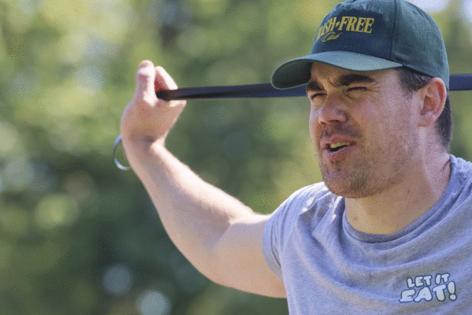
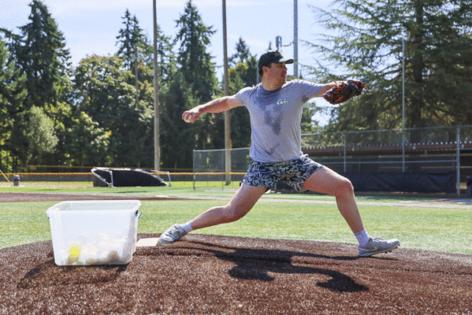


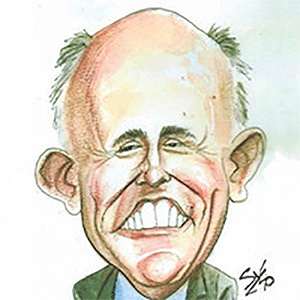

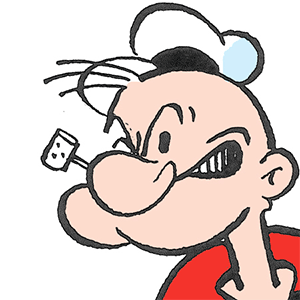


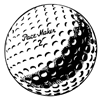
Comments